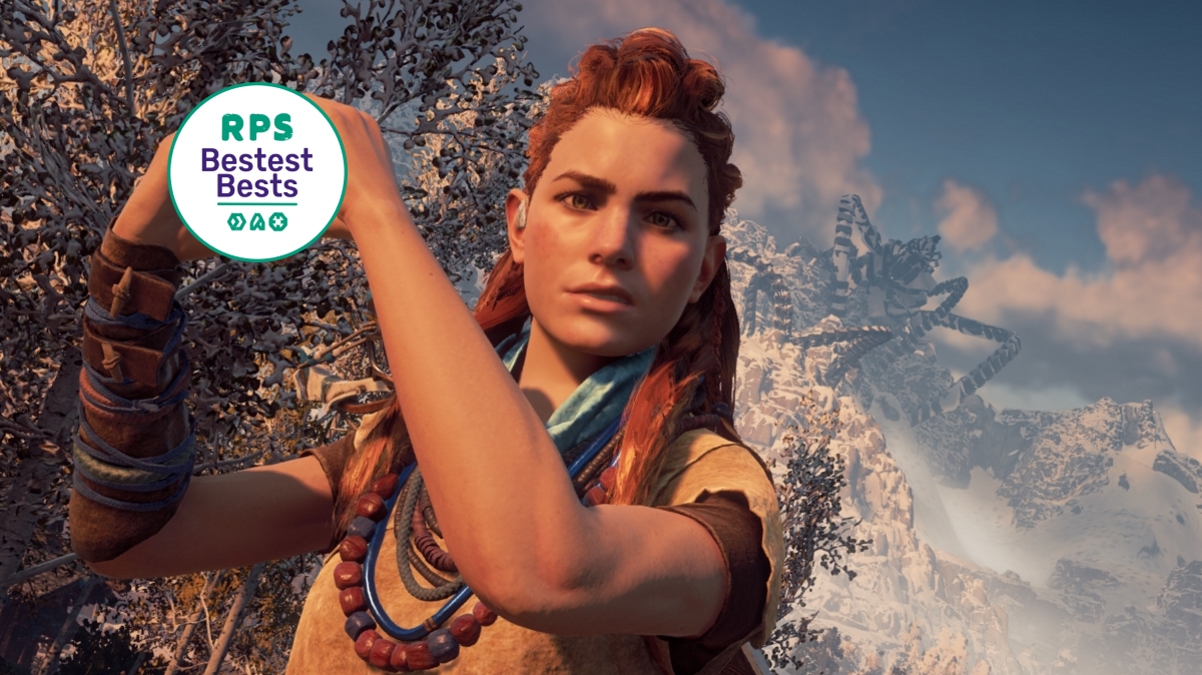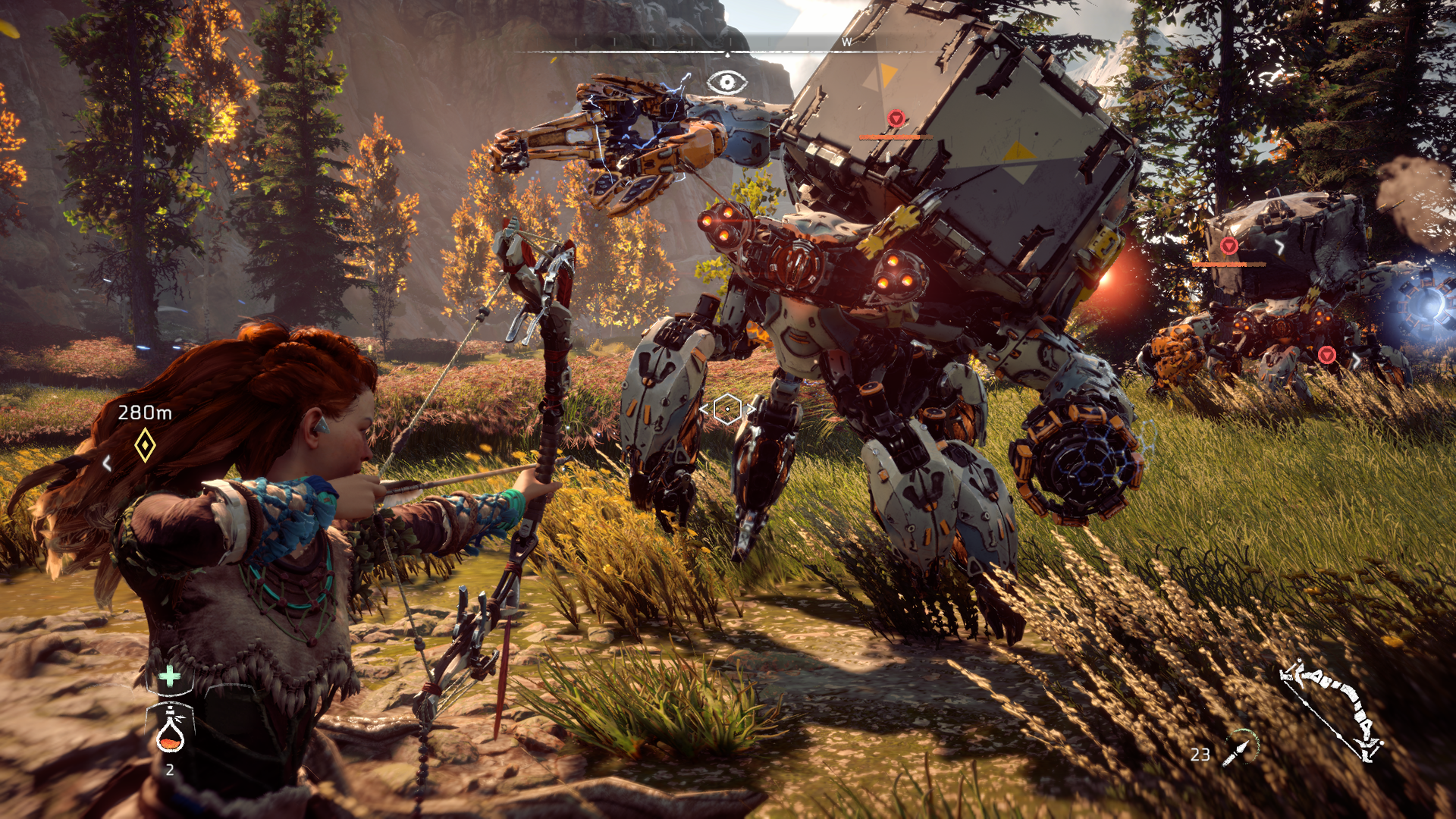

Coming back to base to see what your friends have to say about events cements the stakes of the plot. The moments when you see characters talk to each other are some of the most impressive in the game. Your companions’ faces come alive when they react to Aloy.

Exceptional animation brings the characters you meet to life. Guerrilla Games has always made beautiful games but here the team’s technical art serves the story. It’s ultimately what makes Forbidden West more than just another open-world, action game. It may not have the choices of Mass Effect and Dragon Age, but we felt as involved with our companions as we would in those classic RPGs. While this is a linear story with only a handful of branches to choose between, we still formed deep relationships with these characters. If you want, you can spend hours talking to your companions. This focus on character in Forbidden West is clear from how much time you spend in dialogue trees. It fleshes out the world of Forbidden West and makes it feel lived in. Each character brings new perspectives, relating events back to you from a different angle. That includes wonderful new additions to Aloy’s inner circle like Zo, a fierce personality from a largely peaceful tribe, and Kotallo, a brooding warrior dealing with the recent loss of an arm. Varl and Erend return, but the game has a broader interest in 'putting together a team'. And it works because of the rich characters that fill the world.

Forbidden West is about reconnecting with humanity and forming, or reforming, friendships. She’s forcing herself into a lonely existence as she doesn’t want to burden others with the weight of her own. She quietly slinks off into the night to avoid accepting the help of Varl, pushes away Erend having left him after the first game without a word. While never uncaring, especially to the downtrodden and those in need, at the start of the game, Aloy is running from social connections.


 0 kommentar(er)
0 kommentar(er)
